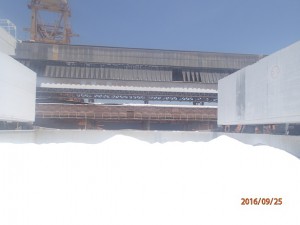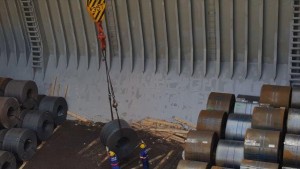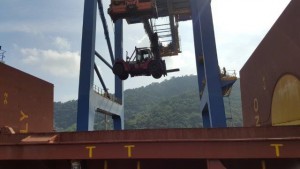AEC Long Term Period Vessel Loads Steel Pipes in India
For the second time in August 2016 AEC loads steel pipes. This time on long term chartered vessel MV Bunun Hero at the port of Munda in India. The Bunun Hero is getting used to this kind of cargo having also loaded steel pipes on her maiden voyage from Japan. This time she loaded in excess of 10,000mt coated pipes spread over her 5 box shaped holds.
“You need a box hold vessel to load this kind of cargo efficiently and safely. However, care and efficient coordination with stevedores, as was the case here, is still vitally important” says Jesper Lollesgaard, Chartering Manager in London responsible for Asian markets.
This is the second time that AEC have loaded steel pipes at the port of Mundra in India.
What comes after the energy products are used in the production? AEC is there as well
AEC is truly present in the dry bulk from agricultural to energy where we are we are a preferred, first class, reliable Carrier. Nothing strange about that when we look at the full company name being Agriculture and Energy Carriers…
Additionally, AEC has also been a great option for customers with finished products after various energy products have been used in the production. Steel products being one of them and they go under what is called Break bulk and General Cargoes.
Definition: ‘In shipping, break bulk cargo or general cargo are goods that must be loaded individually, and not in intermodal containers nor in bulk as with oil or grain.’
We are especially focused on areas where the AEC’s team over the past three decades has extensive experience and a great network.
Anderson Luiz da Silva – Chartering Manager, South America
MV “Adelina” (34,032 Dwat / Buit 2012 / 4 x32 mts cranes) on Time-Charter to AEC loaded steel coils at Itaguai, Brazil.
Special forklift used for moving the coils around the in the vessels cargo holds are lifted onboard the vessel.
HEAD OFFICE
AGRICULTURE & ENERGY CARRIERS LTD.
Lyford Cay Financial Center
P.O. BOX, N-7776-283
Nassau, New Providence
The Bahamas
ASSOCIATIONS
Marine Money
Steamship Mutual
BANKS
Credit Suisse AG
REPORTS
Note: All market reports concerning Chartering, Bunkers, FFAs or S&P,
to be forwarded to the Reports e-mail



